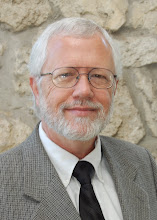Also note: Not all family films are good to bring kids to.
Put Marley & Me in that category. On the surface, the film is a comedy about a lovable though rambunctious dog. But it's really about how he tests their limits for love, and in so doing, expands those limits. It also explores some very adult life choices.
Child or career? It's a question young couples often ask, especially if each mate is ambitious and talented. And John and Jennifer Grogan (Owen Wilson and Jennifer Aniston) fit that bill. He's a news writer for the Sun Sentinel in Fort Lauderdale. She's a feature writer for the Palm Beach Post. (Full disclosure: I
 work at the Sun Sentinel and used to talk to John occasionally, though I didn't know him well.)
work at the Sun Sentinel and used to talk to John occasionally, though I didn't know him well.)Their solution at first is a large, adorable yellow Labrador puppy. Naming him Marley, for the late reggae singer Bob Marley, they treat him like their child.
That is, if your child chews couch cushions, terrorizes a sitter, howls at South Florida's many thunderstorms and chases just about anything, dragging along whoever is holding the leash. Marley is even expelled from obedience school.
Jennifer finally becomes pregnant -- three times -- and leaves her job for the mommy track. The kids plus "the world's worst dog," as John calls him, cause quarrels. John withdraws, Jennifer calms down and apologizes, they make up.
But long before then, it's clear that Marley has pried open the Grogans' hearts. After all, if they can bear with a big, half-insane dog, they can surely care for human children.
Family values even figure professionally. Jennifer leaves her job to care for the kids. She also supports his decision to move to the Philadelphia Inquirer.
There, he crosses paths with a friend from the Sun Sentinel -- someone he envied for his job as a foreign correspondent. To his surprise, the friend seems to envy John, for his beautiful wife and three kids. Thought-provoking stuff on life's tradeoffs.
The cautions? Some "goddamns" and lovemaking scenes, with a bit of partial nudity (hey, it does portray a married couple, and it does have Jennifer Aniston to show off). There's also a squick-inducing scene where John has to sift through Marley's poop for a necklace he ate.
Another question mark is when John and Jennifer want to make love in an Irish inn, but not with pictures of Jesus and Mary in the bedroom. Oh, yeah, there's also when Marley humps the instructor's leg at obedience school (Kathleen Turner, in surely her most humiliating role.)
So, yes, Marley & Me qualifies as a family film. It reaffirms traditional marriage and shows how commitment can overcome difficulties. Just leave the youngest members of the family home.






